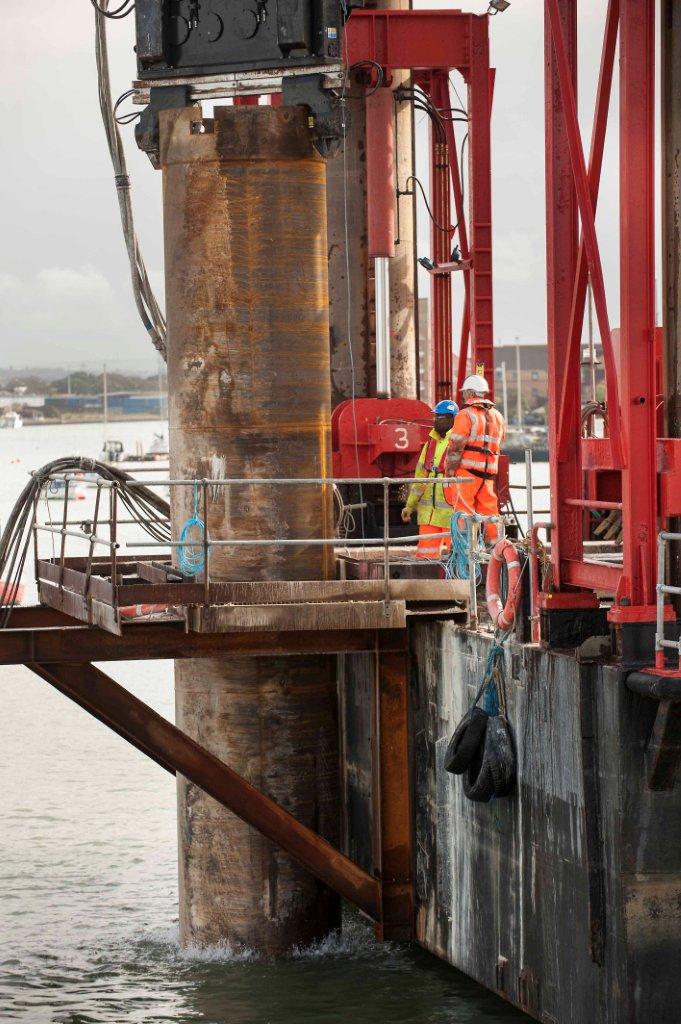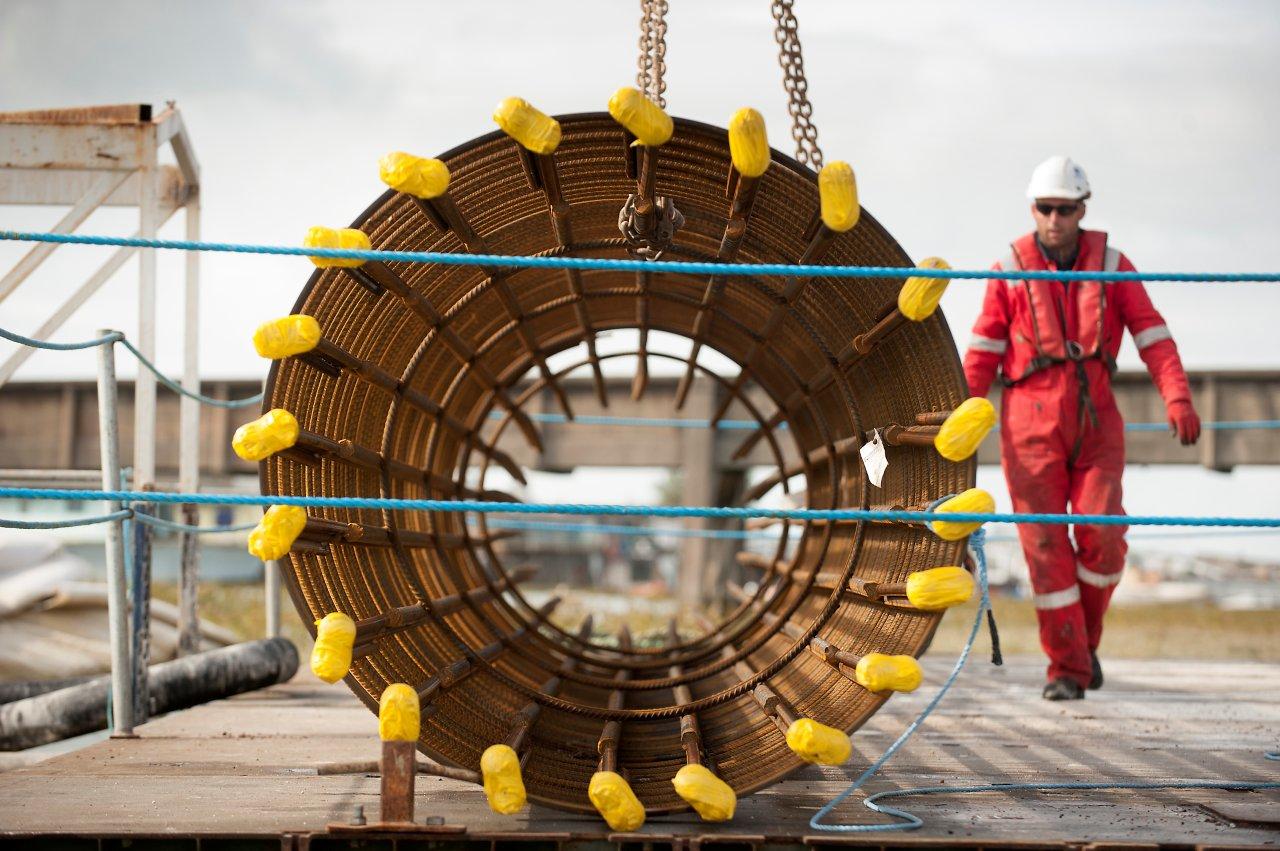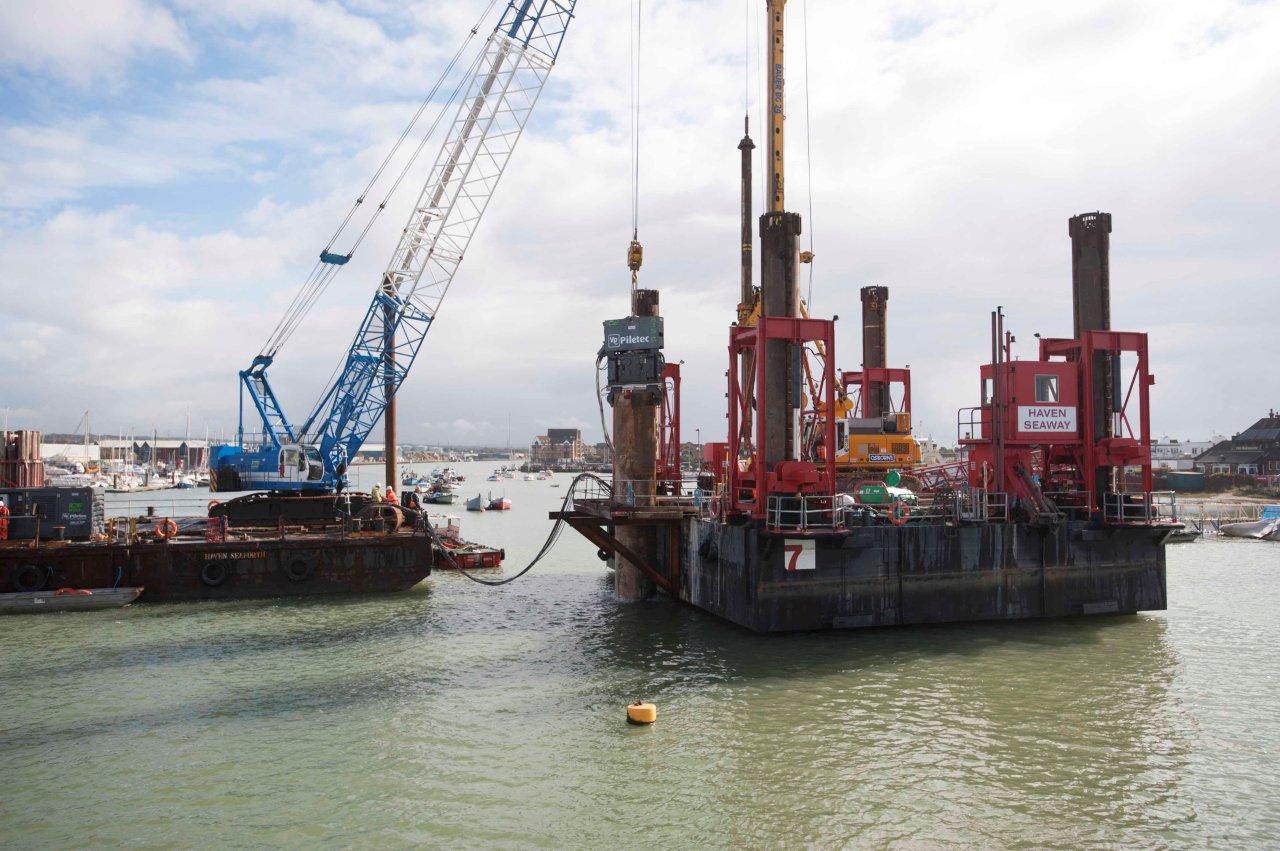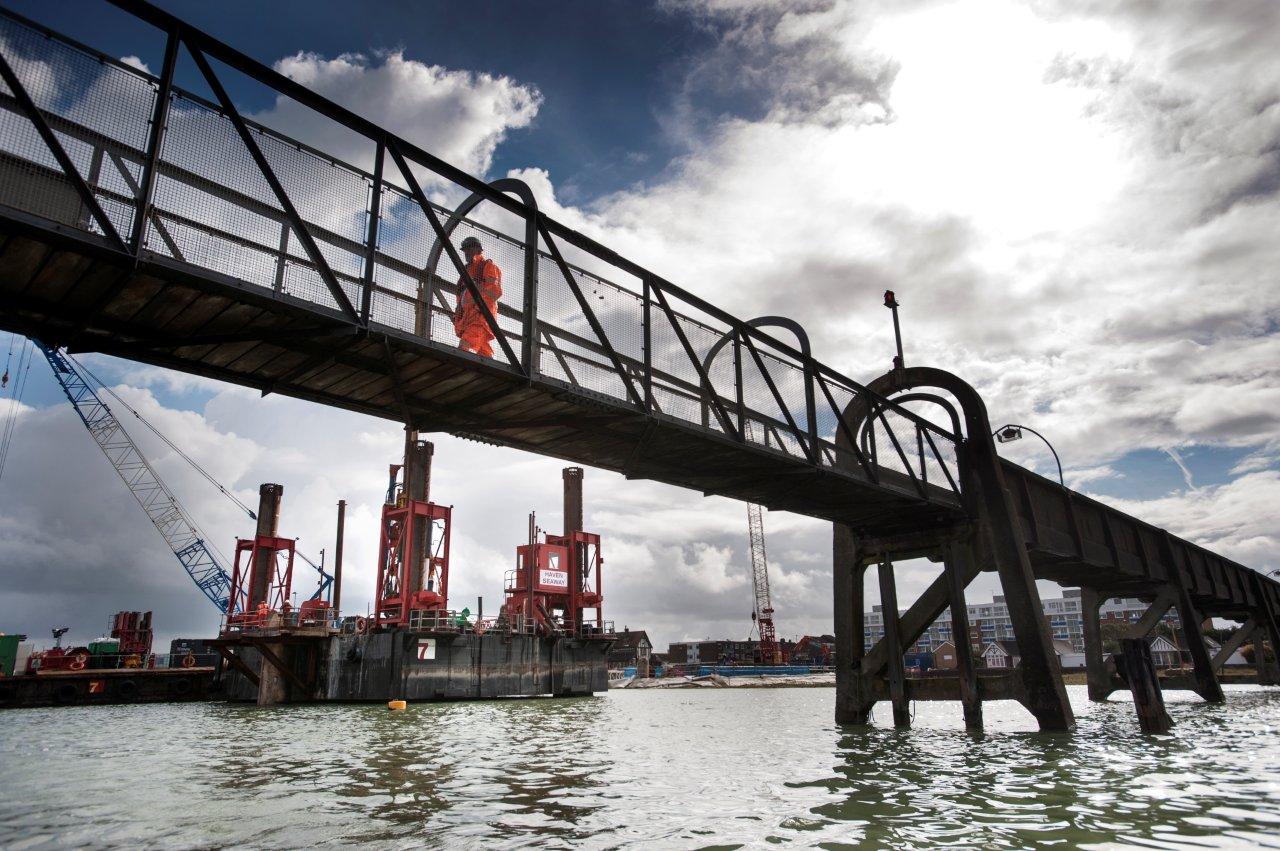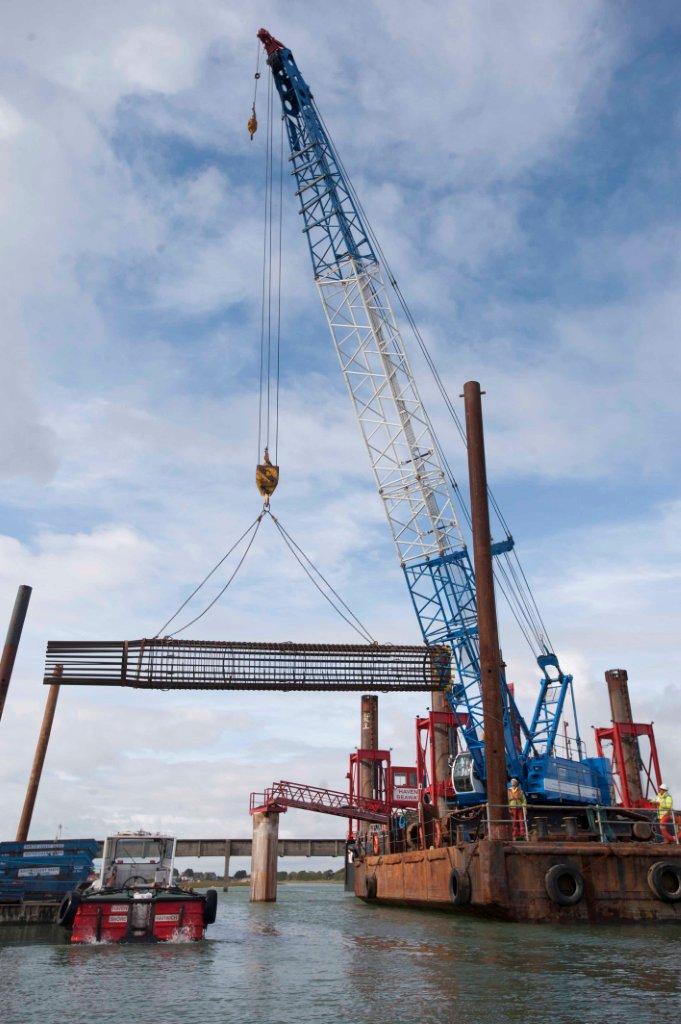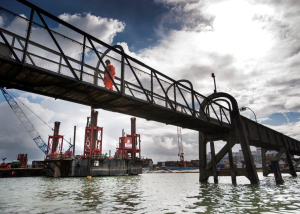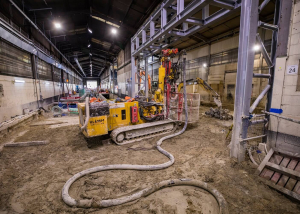THE SCHEME
Piling for the Adur Ferry Footbridge built over Shoreham Harbour in West Sussex lasted six weeks, and saw Bachy Soletanche teaming up with Red 7 Marine, and working for main contractor Osborne, and West Sussex County Council.
DESIGN
The piling project for this swing bridge consisted of seven permanent cased bearing piles that form the foundations of the new, long awaited, replacement footbridge across Shoreham Harbour that links Lower Beach Road with Shoreham High Street. Five piles are marine based and needed to be piled from a jack-up barge while the two remaining piles were installed from land. All the piles were constructed using permanent casings vibrated into the firm chalk strata, before being excavated by Rotary techniques bored using a BG24. The marine elements were completed in conjunction with Red7 Marine who supplied the barges and support craft.
The marine based piling was carried out off a jack-up barge in a tight estuary near the existing bridge, the river, and West Sussex Yacht Club.
CONSTRUCTION
This piling project involved seven 900mm piles, two 1200mm piles, and one 1500mm diameter pile for the central turning section. The piles were bored up to a maximum depth of 27 metres.
This was a particularly interesting and tricky job due to the site being one of environmental significance, as a nesting area for endangered bird life. Added to this the team had to overcome the additional challenge of the discovery of World War 2 bombs found in the Marine muds.
With the existing bridge built in the 1920s, naturally needed replacing by a more modern and much wider bridge. All parties had to work together to meet the tight programme deadlines, very tight budget and to see the footbridge opened to the public on time. The bridge is used by local pedestrians, tourists, cyclists and has facilities for the disabled.
Main Contractor, Geoffrey Osborne constructed a causeway onto the riverbank to enable the site team to start work on piling and then constructing the new £9.8 million Lottery funded, footbridge. The team used a selection of barges to construct the sections of the bridge, which will go over the river and could not be built from either side of the riverbank. The barges shipped materials from the shore to the areas where the team was working and remained anchored in that spot, while the site team completed that section of the piling for the bridge.
The 200m long, 4m wide bridge, has a precast concrete and steel deck, and spans the River Adur. The 50m wide central span, can be swung open to allow river traffic to pass through.
